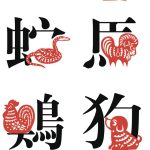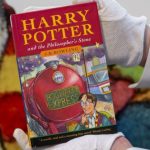A curved walkway seems to float in midair, above the street, like the bridge in some Japanese watercolour. Stand in the middle and you have unexpected views of the Leeds street below. It is an aerial joy, but there is a bigger purpose: which is to carry viewers from the Victorian splendour of Leeds Art Gallery, with its satirical Hogarths and its swooning pre-Raphaelite damsels, its Rodins and Epsteins and early Paula Regos, to the Henry Moore Institute next door.
The bridge has been closed for several years, severing the connection between ancient and modern, and specifically between sculpture dating back to 1712 in the old building and forwards to the 21st century in the new. But now it has reopened, along with a refurbished sculpture institute intent on wider welcomes, brighter decor, better research facilities and so forth. The choice of artist to mark this improvement could hardly be more apt, even though he is scarcely known in this country: the brilliantly original Hany Armanious.
Armanious was born in Egypt in 1962 and emigrated to Australia with his family at the age of six. Everything he makes has this air of coming across a new world. Nothing he left behind was quite like what he encountered in this other continent, from actual objects to spoken language. The strangeness is there in the show’s title: Stone Soup – a lump in the throat, a paradox, a weirdness you cannot swallow.
Take Moth, which opens the exhibition. This curious, shoebox-sized object sits on a window ledge. Its upper section is a dry brown carapace that might be made of terracotta. Below is some kind of plant pot holder, which might have exoskeletal overtones – but only if you are looking for a direct connection between sculpture and title.
There is a nose (or is it the opposite?) that appears to be made out of one end of a baguette, stuffed into a crust. Do moths love bread? This outlandish object definitely has force of personality, and perhaps there is some approximation to a winged critter, but what it most looks like – speaks of, refers to – is its own novel self.
You may recognise some of the components – a shoelace, a candlesnuffer, a lump of Blu-Tack or an empty jam jar – but Armanious strips away their original associations, so that you too are looking anew. Here is an agglomeration of stone chips, concrete and mortar – a chunk of building materials, as it seems – lying on the ground. Below lies a strip of pavement, performing the role of sculptural plinth. The work is titled The World (and what is a world if not a sedimentary mass beneath our feet?).
Here is a noticeboard, turned sideways, all its pinpricks now registering as an outer space of starry constellations. A couple of rubber bands on a peg become amber bracelets. Some adjustments are small, others seem vast.
The sense of remoteness, estrangement, comes partly through Armanious’s method, which is to cast everything in resin. Soft objects – foam, wax, felt – become hard to the touch at one remove. A log suspended from a hook looks flaccid as a Claes Oldenburg soft sculpture, but is actually as rigid as a Giacometti bronze. It is marked all over with the teardrop patterns characteristic of a particular palm frond, and the polystyrene plinth below is apparently pitted with tears. The title is Weeping Woman, nodding straight at Pablo Picasso.
Other titles allude to tears, but Armanious seems anything but lachrymose. One of the most quizzical of the 30 works here is Mumble, from 2023, in which a shoelace gets caught around what look like wax crayons. Can’t get the words out – or the images free – from this strangled cat’s cradle.
Object and image are constantly tangled up. The back of a painting, its frame stuffed with soil, becomes a sculpture (wittily titled Flat Earth). Two sections of a garden gate are fused so that the wrought iron curlicues turned into lithe calligraphy: writing on the wall. Marooned on the floor is an old sink, holding a scattering of autumn leaves. It is simply titled Image.
Armanious – head of sculpture at Sydney’s National Art School and Australia’s representative at the 2011 Venice Biennale – is at the peak of his art. That this show, curated with exemplary empathy by the Henry Moore Institute’s director, Laurence Sillars, should be the sculptor’s first in a European museum comes as a surprise.
Armanious’s fascination with the world of forms extends all the way to modernist sculpture (the Blu-Tack reminiscent of the old jibe about the chewing-gum elasticity of Henry Moore’s sculptures), but there is something more lyrical at play in this show. A picture frame, now minus its picture, leans against the wall, its glazing positioned at a slight angle so that it seems to collect the hazy impressions of people’s feet as they pass. It is titled Sleeping Under Water.
And best of all are two more sculptures titled Moth. One involves a table tennis bat, so that suddenly you hear a remembered sound even as the form conjures the form of folded wings. The other is just purely beautiful: a fragment of woven basket spreading its papery wings halfway up to the ceiling. How does it stay there, this sculpture, this insect, this fragile drawing on the wall?











